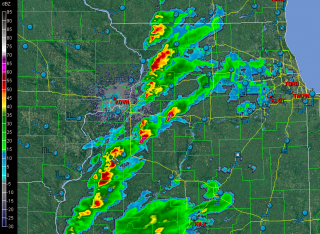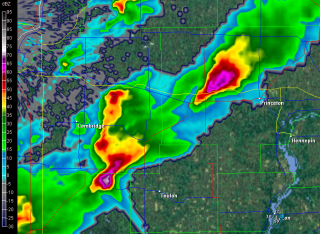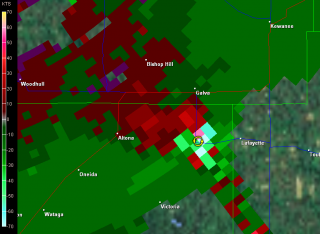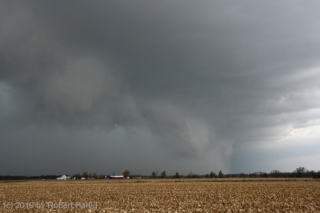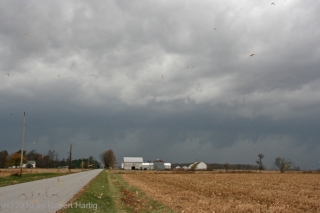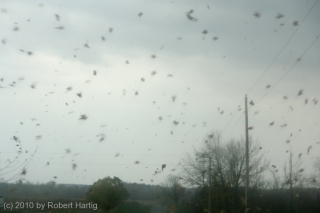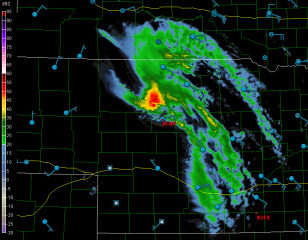Now here’s something you don’ see very often on November 22 in the Great Lakes: supercells cruising across northern Illinois. I’d be very happy to be on either the one northwest of Toulon or the one northwest of Princeton. The storms are extending along the cold front northeast on into Wisconsin.
Whoops! The one down by Toulon is now tornado-warned. Imagine that! Here are some radar grabs. Click on them to enlarge.
And with that, I’m signing off.
